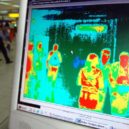THE EMERGING FACE OF FACIAL RECOGNITION TECHNOLOGY
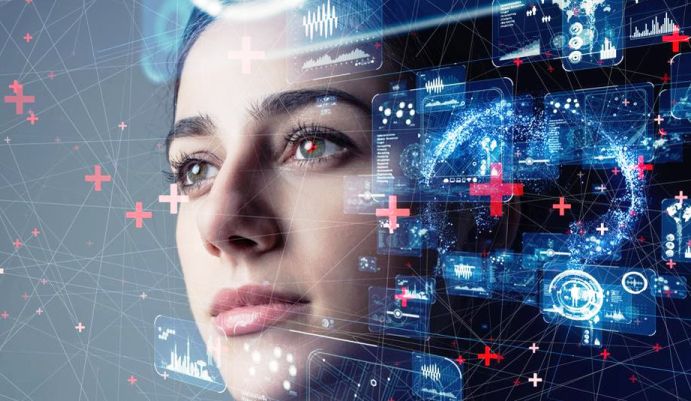
Face recognition technology (FRT) has long been employed in science fiction flicks to depict a futuristic world of advanced technology. In the 1960s, “Star Trek” dazzled audiences demonstrating retina scans and facial recognition scans as a part of their digital security system. “Robocop,” a 1987 Hollywood movie, unveiled futuristic police checking digital facial recognition instead of a driver’s licence. Steven Spielberg’s Minority Report made in 2002, showed Tom Cruise, who is on the run, walk into a retail store. The retailer has technology that recognises each arriving shopper and instantly displays the images of clothings by the taste and preferences of the customer.
 Facial recognition is a relatively new technology that law enforcement agencies worldwide have started adopting to identify persons of interest. Face recognition identifies or verifies an individual by comparing and analysing patterns, shapes and proportions of their facial characteristics and contours. Police organisations are regularly utilising facial recognition to uncover probable crime suspects and witnesses by skimming through millions of photos. Authorities are also exploiting this technology for surveillance at public venues like concerts and stadiums and to gain entry into specific properties. Most police departments are today considering face recognition to be an indispensable tool to solve the most heinous crimes, like terrorist attacks and violent assaults.
Facial recognition is a relatively new technology that law enforcement agencies worldwide have started adopting to identify persons of interest. Face recognition identifies or verifies an individual by comparing and analysing patterns, shapes and proportions of their facial characteristics and contours. Police organisations are regularly utilising facial recognition to uncover probable crime suspects and witnesses by skimming through millions of photos. Authorities are also exploiting this technology for surveillance at public venues like concerts and stadiums and to gain entry into specific properties. Most police departments are today considering face recognition to be an indispensable tool to solve the most heinous crimes, like terrorist attacks and violent assaults.
For instance, in New York City in 2019, a man followed a young woman home from work. He attempted to kidnap and rape her at knifepoint, after hauling her into a grassy area before ultimately letting her go. Investigators employed facial recognition technology to compare pictures from surveillance video at a food shop close-by with a mugshot database. A little more investigative work enabled the police to identify a suspect and arrest him within 24 hours. The 27-year old suspect arrested previously for raping a 73-year old lady was on bail when the offence was committed. In February this year, Delhi police used facial recognition technology to identify more than 1500 rioters who had created communal unrest in the North-East region of Delhi.
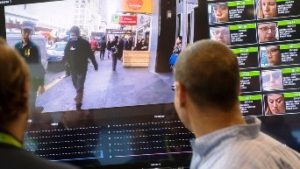 Further, the use of facial recognition technology in India helped police find 3,000 missing children in only four days. Scanning 45,000 children in New Delhi would be an almost ridiculous chore using conventional methods. But facial recognition technology could sift through the data in a matter of hours, enabling thousands of children to be identified, matched to missing person complaints, and reunited with their families.
Further, the use of facial recognition technology in India helped police find 3,000 missing children in only four days. Scanning 45,000 children in New Delhi would be an almost ridiculous chore using conventional methods. But facial recognition technology could sift through the data in a matter of hours, enabling thousands of children to be identified, matched to missing person complaints, and reunited with their families.
The INTERPOL Face Recognition System (IFRS) contains facial images from more than 179 countries, making it a distinctive transnational criminal database. Since 2016, more than 1,000 criminals, fugitives, persons of interest or missing persons have been identified using INTERPOL’s facial recognition system.
 Back in India, there have been several FRT endeavours. Telangana Police have created a facial recognition system that enables them identify offenders by comparing the suspects’ faces with digital photographs in a central database called Crime and Criminal Tracking Networks and Systems (CCTNS). Chennai city police used a face recognition software called FaceTagr developed by a Chennai-based company to police the Diwali shopping crowds. Similarly, Amritsar Police uses a face recognition technology developed by a Gurugram AI company Staqu Technologies called Punjab Artificial Intelligence System(PAIS) that could detect a murder case within 24 hours. The Staqu-developed PAIS claims that it can match images with a precision of 98% if the database has five photos of the person. Elsewhere, the Surat Police is using the state-of-the-art NeoFace technology of NEC for solving crimes. In July 2018, Andhra Pradesh launched e-Pragati, a searchable database of millions of people containing e-KYC Aadhaar numbers. Uttar Pradesh Police in December 2018 attempted “Trinetra” an AI-based application with face recognition capabilities and a database containing 5 lakh criminals.
Back in India, there have been several FRT endeavours. Telangana Police have created a facial recognition system that enables them identify offenders by comparing the suspects’ faces with digital photographs in a central database called Crime and Criminal Tracking Networks and Systems (CCTNS). Chennai city police used a face recognition software called FaceTagr developed by a Chennai-based company to police the Diwali shopping crowds. Similarly, Amritsar Police uses a face recognition technology developed by a Gurugram AI company Staqu Technologies called Punjab Artificial Intelligence System(PAIS) that could detect a murder case within 24 hours. The Staqu-developed PAIS claims that it can match images with a precision of 98% if the database has five photos of the person. Elsewhere, the Surat Police is using the state-of-the-art NeoFace technology of NEC for solving crimes. In July 2018, Andhra Pradesh launched e-Pragati, a searchable database of millions of people containing e-KYC Aadhaar numbers. Uttar Pradesh Police in December 2018 attempted “Trinetra” an AI-based application with face recognition capabilities and a database containing 5 lakh criminals.
Unlike DNA technology, facial recognition is not expensive and time-consuming, once installed the facial system needs little overheads or expenses. . The relative ease of the process makes it easy to incorporate it as a part of daily work. Much of the fear about facial recognition technology is because the public knows little about how police are using the technology and whether it has effectively lessened crime. The police departments that use facial recognition have not been forthright about how they use the technology. As long as police departments continue to use face recognition under this information void, the retaliation against the technology will likely grow more robust, no matter the potential upsides. Unfortunately, most of the time, the police have been found using the technology to solve routine crimes and identify people they see as suspicious quickly.
 The technology can add value if used properly. At present, people do not have a good understanding of technology; hence a little education could help in gaining acceptance. Civil liberties groups have been crying hoarse that facial recognition contributes to privacy erosion, bolsters bias against minorities and is susceptible to misuse. San Francisco, Boston and a prominent police body camera manufacturer have banned FRT by law enforcement. IBM too has backed away from its work in this area. The biggest fear is that the government might misuse the technology for surveillance. Hence some more states are contemplating a ban on technology in certain areas.
The technology can add value if used properly. At present, people do not have a good understanding of technology; hence a little education could help in gaining acceptance. Civil liberties groups have been crying hoarse that facial recognition contributes to privacy erosion, bolsters bias against minorities and is susceptible to misuse. San Francisco, Boston and a prominent police body camera manufacturer have banned FRT by law enforcement. IBM too has backed away from its work in this area. The biggest fear is that the government might misuse the technology for surveillance. Hence some more states are contemplating a ban on technology in certain areas.
The Boston Marathon bombings brought out the limitations of facial-recognition technology. Facial recognition technology is less accurate on people of colour. Further, the error rate of facial recognition technology is higher for men than women. CyberExtruder, a reputable company supplying facial recognition software to some law enforcement agencies, has accepted that some skin colours give high error rates. Some facial recognition systems available today have an accuracy rate of 99.31% on the still frontal face. Modifications in lighting, face positioning, facial expressions, profile pictures, makeup, hairstyle, facial hair, glasses, and other accessories diminishes the precision rate. A big smile can render the system less effective.
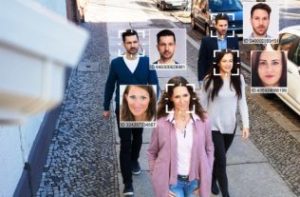 Facial recognition being a powerful technology; the State should consider it’s use only for law enforcement and national security, that too, with adequate safeguards. Aadhaar has iris and biometric information; there appears to be a move to strengthen it with facial recognition. Once that is done, Aadhaar will have total surveillance infrastructure. Usage of facial recognition technology in the absence of any data protection or data privacy law could result in misuse of the technology. There is no legal provision to stop the misuse of facial recognition technology in India. The Information Technology Act, 2000 does not have provisions to deal with the abuse of technology. Cybercriminals appear to be taking advantage of this situation by making such data available on the darknet.
Facial recognition being a powerful technology; the State should consider it’s use only for law enforcement and national security, that too, with adequate safeguards. Aadhaar has iris and biometric information; there appears to be a move to strengthen it with facial recognition. Once that is done, Aadhaar will have total surveillance infrastructure. Usage of facial recognition technology in the absence of any data protection or data privacy law could result in misuse of the technology. There is no legal provision to stop the misuse of facial recognition technology in India. The Information Technology Act, 2000 does not have provisions to deal with the abuse of technology. Cybercriminals appear to be taking advantage of this situation by making such data available on the darknet.
Finally, recognising our spiritual nature or spiritual recognition technology could go a long way in overcoming facial recognition technology concerns. If we treat faces as just another unit of data, that is to be harvested by the global surveillance machine. Something sacred and spiritually deep within us gets transgressed. Counteracting the consequent dystopia recognising our spiritual nature and connecting to the divine blueprint of the soul could help us experience utopia even in a dystopian world.
Source from: epaper/dtnext/chennai/dt:14.02.2021
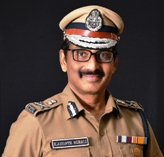 Dr.K. Jayanth Murali is an IPS Officer belonging to 1991 batch. He is borne on Tamil Nadu cadre. He lives with his family in Chennai, India. He is currently serving the Government of Tamil Nadu as Director / Additional Director General of Police, Vigilance and Anti-Corruption.
Dr.K. Jayanth Murali is an IPS Officer belonging to 1991 batch. He is borne on Tamil Nadu cadre. He lives with his family in Chennai, India. He is currently serving the Government of Tamil Nadu as Director / Additional Director General of Police, Vigilance and Anti-Corruption.

